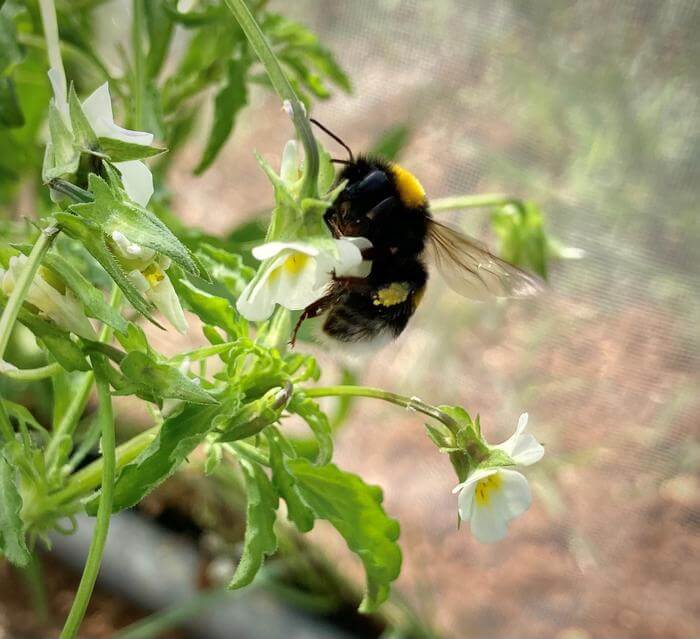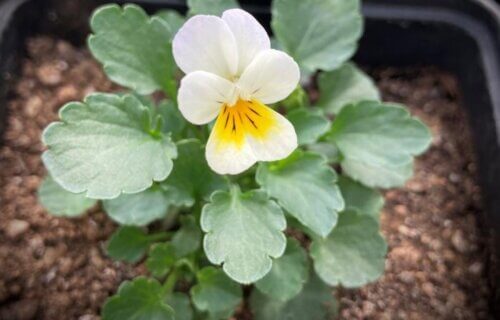PARIS, France — Flowers are apparently taking matters into their own “hands,” a new study explains. Researchers in France say flowers are evolving to self-pollinate due to a concerning drop in insect populations. Unfortunately, the team adds that this may also make flowers less attractive.
This observation stems from French scientists noticing a decrease in floral displays and nectar production in some plants. This change is attributed to an adaptation to less reliance on bees, whose numbers are rapidly dwindling. However, scientists caution that this adaptation, aimed at survival, might paradoxically lead to the plants’ downfall and possible extinction.
Study authors from the French National Centre for Scientific Research (CNRS) and the University of Montpellier studying evolutionary changes in flowers compared field pansies in Paris from the present day to those from 20 and 30 years ago. They observed that contemporary flowers are smaller, produce less nectar, and attract fewer pollinators than their predecessors. This trend, described as a “vicious circle,” suggests that increased self-fertilization results in less nectar for pollinators, further contributing to their decline.
They attribute these declines in pollinating insects, like bees, to environmental factors such as habitat destruction, agricultural pollution, and the introduction of non-native species. A study from Germany indicated a significant reduction – over 75 percent – in the biomass of flying insects in protected areas over the last 30 years.
These environmental changes have led to a shift in the reproductive strategies of plants and flowers, favoring self-pollination. Self-pollination, or “selfing,” occurs when pollen from the same plant fertilizes the flower. However, few plants self-pollinate without external aids like wind or insects. As plants resort more to selfing, they invest less in attracting pollinators through elaborate floral displays.

The French research team utilized an ancestral seed collection of the Parisian field pansy, Viola arvensis, to examine if the species’ mating system had evolved in response to recent pollinator declines. They compared these seeds, collected between the 1990s and early 2000s, with their modern counterparts collected in 2021. Examining 4,000 plants, the researchers measured various traits, including the petal length of the first five flowers on each plant’s main stem, and conducted “pollinator preference” experiments with bumblebees.
The study revealed a consistent 20 percent average reduction in traits used to attract pollinators, such as nectar volume. Moreover, modern flowers were found to be 10 percent smaller and significantly less frequented by pollinators than their ancestors. This finding underscores a concerning decline in the long-standing symbiotic relationship between pollinators and plants. The researchers warn that this evolutionary shift, widely deemed “irreversible,” could ultimately lead to the extinction of certain plant species.
“Evolution towards selfing could thus be driven by natural selection over the short term but could impede long-term plant population survival,” the research team writes in the journal New Phytologist.
“We documented trait evolution towards smaller and less conspicuous corollas, reduced nectar production and reduced attractiveness to bumblebees, with these trait shifts convergent across the four studied populations,” the researchers report.
“This study thus provides a unique demonstration for a convergent evolutionary change in plant mating systems over a short timescale in natural populations. This study is the first to show convergent evolution across populations, reduced rewarding trait and reduced attractiveness.”
“Our results illustrate how mixed-mating species may evolve towards a higher reliance on self-pollination and reduced plant–pollinator interactions in the face of global change, in particular pollinator declines,” the study authors conclude. “If this rapid transition towards a selfing syndrome reflects a broader trend among Angiosperms, it may reflect a concerning extinction debt.”
“Environmental changes may thus present a double jeopardy to pollinator populations, as they become victims of both the changes themselves and of plant trait evolution.”
You might also be interested in:
- Cranberries can bounce, float and pollinate themselves: The saucy science of a Thanksgiving classic
- Tomato plants ‘scream’ when you cut their stems! Now you can hear what it sounds like
- Bees get buzzed off caffeine just like humans — and it makes them better pollinators
South West News Service writer James Gamble contributed to this report.

